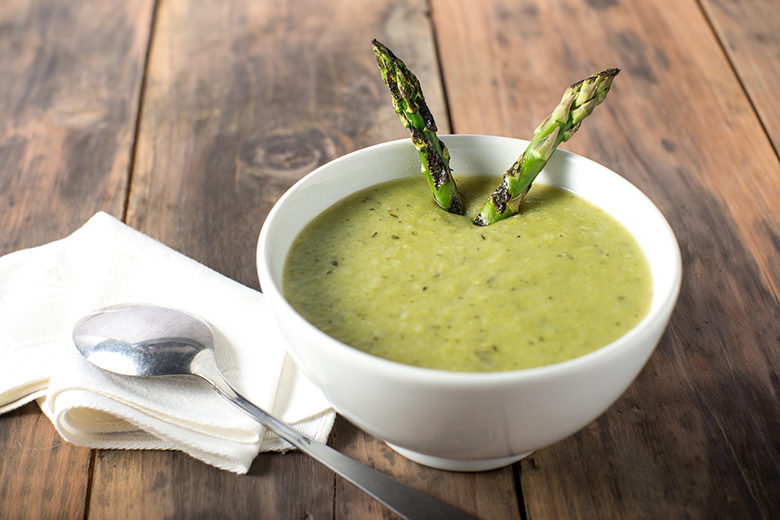
Many parents struggle to get their little ones to meet their daily vegetable quota. I've found that kids shy away from vegetables for a variety of reasons:
- Neophobia, or a fear of new foods. Neophobia can be a very natural defense mechanism that Mother Nature invented to protect the children of our ancestors from putting potentially dangerous foods into their mouths.
- Bitter flavor. Kids have a preferred taste for sweet foods. Unfortunately, many vegetables taste a little bitter, especially to kids whose taste buds are more sensitive to bitterness.
- Food rewards and mealtime pressure. Inappropriate feeding strategies like bribing and food rewards can make kids think that eating vegetables is a chore they need to get through before getting to a “better” food. Besides, if parents pressure children to eat vegetables, the children seem to take much longer to learn to enjoy them.
- Not enough learning opportunities. Many parents serve a new food only a few times before deciding that a child “does not like it” and removing it from the menu.
Research shows that constant exposure is the key to food acceptance. The results of a recent experiment by Dutch scientists confirmed the previous findings that consistent exposure to unfamiliar vegetables may be enough to get kids to eat more of them. In this study, toddlers between the ages of 2 and 4 were offered spinach and endive soups twice a week for seven weeks. By the end of the experiment, the kids not only ate more of the soups but continued to enjoy them even 2 and 6 months later.
Veggie soups may be easier to handle for some kids because the flavor of the vegetables becomes milder after they have been cooked in water or broth with seasoning and then pureed into smooth silkiness. The extra fat — in the form of olive oil or butter — may also help kids accept and learn to like these new flavors. Finally, the familiar pureed texture can make the new vegetables seem less scary.
If you want to try serving your vegetable-phobic family pureed soups, I would recommend keeping the serving sizes very small, around ¼ of a cup. Even if kids eat only a couple of tablespoons, they will still feel like they have handled this new food pretty well. Do not forget to drizzle the soups with a little extra olive oil or drop a couple of pieces of butter to make the soups look even prettier. And if you have some cute colorful baby bowls or pretty teacups, make sure to use them to make the soup feel more special. Finally, if kids reject the soup you prepared, remain neutral, remove it without comments and put it on the menu sometime soon.
Since many of us do not have time to experiment with dozens of recipes, I suggest using the same basic sequence of steps to prepare a variety of soups. The important thing to remember is that because of the high water content of many vegetables, it is best to add a smaller amount of water or broth first (just enough to cover the vegetables). Then, add more if needed after blending the soup into a puree. And make sure to experiment with spices and add some garnish to the soups.
I also find that individual servings of soup can be frozen in plastic bags to be reheated; packed in insulated cups in lunch boxes; or served as an afterschool snack or appetizer at dinner.
Here is a basic recipe that can be adapted for four family-favorite soups: tomato, mushroom, fresh green pea and butternut squash soups. You can use the basic idea with other vegetables too! Sweet potatoes, broccoli, asparagus, carrots, spinach and cauliflower all work great in soups.
Vegetable Puree Soup, Four Ways
Recipe by Natalia Stasenko, MS, RD, CDN
Ingredients
1 tablespoon of olive oil
1/2 cup of chopped onions or shallots
2 minced garlic cloves
4 to 6 cups water, vegetable stock or chicken stock
Salt and pepper to taste
Additional olive oil of butter, for garnish
For Fresh Green Pea Soup
4 cups of fresh green peas, fresh or frozen
1 generous handful of mint
For Butternut Squash Soup
4 cups of peeled and chopped butternut squash
½ teaspoon ground cinnamon
½ teaspoon cumin
Toasted pumpkin seeds for garnish
For Mushroom Soup
6 cups sliced mushrooms
1 teaspoon fresh thyme
Sautéed mushrooms for garnish
For Tomato Soup
4 cups of canned chopped tomatoes or chopped fresh tomatoes
A pinch of sugar (this really help to highlight the natural sweetness of tomatoes)
Several basil leaves
Directions
- Sautee the onion and garlic in olive oil in heavy bottom pot until soft and translucent.
- Add your choice of vegetables and about 3-4 cups of stock or water. Add just enough liquid to cover the vegetables when they are cooking and keep some extra aside.
- Cook the vegetables until soft, 15 to 20 minutes.
- Puree the soup using a stick blender or puree in batches in a stationary blender.
- Transfer the puree back into the pot, adjust the seasoning, add more water or stock if needed and reheat.
- Drizzle with some extra virgin olive oil or add a couple of small pieces of butter in a plate right before serving.
Notes About Herbs and Spices
- For fresh green pea soup: Add a handful of fresh mint just before blending the soup and use some for garnish alongside with some half and half if desired.
- For butternut squash soup: Add cinnamon and cumin when sautéing the onion and garlic. Garnish with toasted pumpkin seeds.
- For mushroom soup: Add ½ teaspoon dry or 1 teaspoon fresh thyme before to the soup when cooking. Garnish with sautéed mushrooms.
- For tomato soup: Add a few chopped basil leaves before blending it into a puree.




